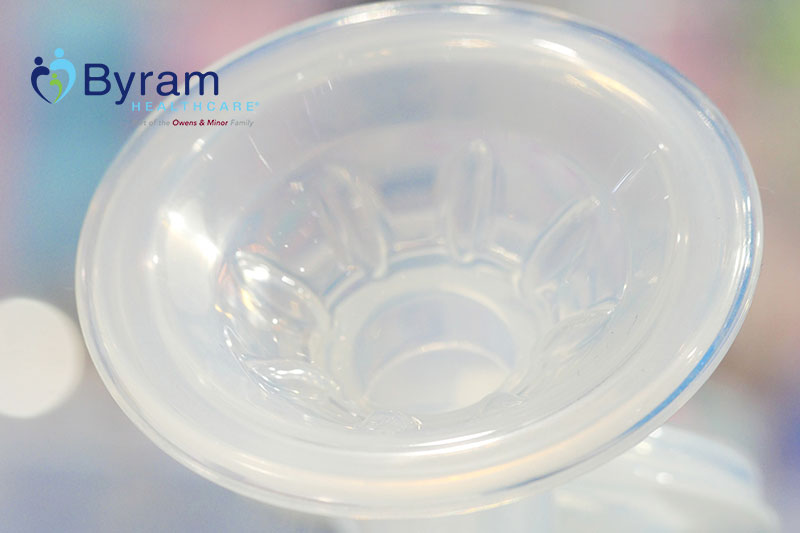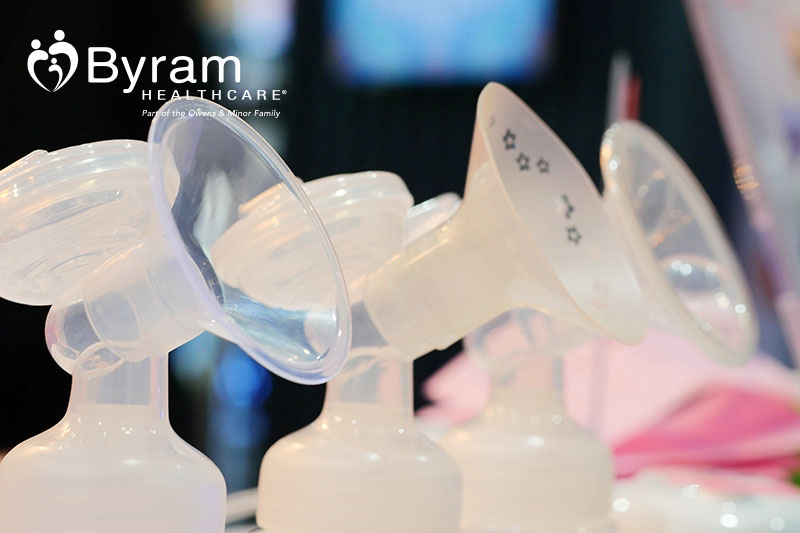Using a Breast Pump
While breastfeeding is the preferred method of feeding, you will get tired and your schedule will seem impossible. When at home with your baby, we always recommend breastfeeding rather than bottle-feeding, especially during the first few months of life. However, we understand that it’s nearly impossible to be on call for 24 hours straight, 7 days a week, 52 weeks a year, so getting a little outside help for feedings is a huge relief. That’s when using a breast pump comes in handy.
For new moms, shopping for a breast pump is intimidating. There are so many different options and types of pumps on the market. Instead of buying what you think is the most popular option, shop with intent. Find something that’s best for you and your situation.
If you think you’re going to be pumping frequently, you’ll want a single or double electric breast pump. If you plan on pumping sporadically, a manual one will do. In certain circumstances, like with premature babies or NICU stays, opting for a hospital grade pump will be the most beneficial.
Regardless of the breast pump that you choose, it’s important to understand how to use it. In this article, we’ll explore everything you need to know about how to use a breast pump along with some helpful tips to get you started.
When and How Much to Pump
The first question you’ll need answered is when to start pumping and how much to pump. The answer is different for everyone. When you start pumping will depend on your needs, if you will have someone help you with feedings throughout the night, or if you’re planning on returning to work.
If you will only be pumping for help during the night, it’s recommended to pump after you’ve fed your newborn for the first time in the morning from the breast that you did not use for the feed. This will be sufficient for relief feeding.
If you plan to return to work, you should pump more frequently. Pumping will help your milk supply stay strong and consistent. Luckily, by the time you end up back at work, your baby will have developed a more consistent – or at the very least predictable – feeding schedule. Start pumping regularly in the mornings about a month prior to returning to work and put the pumped milk directly into the freezer labeled with the date you pumped. Consider purchasing a Mother’s Milk Mate to help you store and retrieve your milk easily.
When you’re primarily breastfeeding, you should aim to pump between feedings, once a day. Most moms say that they see the biggest yield about an hour after feeding. If you plan on exclusively using the bottle, you will need to pump around 8-10 times in a 24 hour period to make sure that your milk production stays steady.
In a 24-hour period, expect to produce 25-35oz. of milk through either exclusive pumping or feeding and pumping combined. Generally speaking, pumping in the morning is when you’ll receive the most amount of milk for your efforts.

The Process of Pumping
Once you’ve learned when and how much, you need to understand how to actually go about pumping. It will be awkward at first, but you’ll get the hang of it in no time. Before getting started, make sure you’ve read your breast pump’s instructions and taken some time to learn about the basics.
When you’re ready, find a nice place to pump. Treat it as a special you-time and make yourself comfortable. Have a cup of tea handy or a cold drink and some snacks. Like we said, this is you-time! If your pump is electric, plug it in to make sure the batteries don’t need to be changed.
Before getting started, always wash your hands thoroughly with soap and water. Since you should have cleaned your pump either after your last session or for the first time out of the box, you’ll need to assemble everything.
When you’re ready to start pumping, make sure that you center the flanges over your breast and have your nipple secure in the flange opening to create an air seal. This is important. Having the wrong size breast shields or flanges causes discomfort and reduces the efficiency of pumping. Make sure you get the best flange fit possible and try a different size if it isn’t working.
When single pumping, apply one flange to the preferred breast. When double pumping, apply a flange to each breast.
Adjust the dials on your pump and try to keep the flange seal tight across your breasts. Turn on your pump, starting at a high speed with low suction. When you start to see a milk flow from your first let-down during pumping, switch to a medium speed but increase the suction.
Listen to your body and make adjustments as needed. It might feel a bit weird at first, but it shouldn’t be downright painful. When your milk flow starts to decrease again, increased the speed again until your next let-down occurs.
Continue with this pattern for about 30 minutes if using a double pump and 15 minutes per breast if using a single pump.
Helpful Tips for Using a Breast Pump
If things don’t go as planned during your first experience pumping, don’t worry. The more you pump, the easier it will be and the more regularly you’ll expel milk. Eventually, pumping will become second nature and you’ll start hitting your milk production goals in no time. In the mean time, here are a few helpful tips for using a breast pump and feeding from the bottle.

Don’t Rush if You Don’t Need to
You don’t have to start pumping immediately. Take some time to bond and focus on breastfeeding your newborn for the first few weeks. Your body will start to naturally produce milk so you don’t need to use a pump for help.
With that being said, if, for whatever reason, your baby isn’t able to breastfeed, you should start pumping as soon as possible after delivery. Premature babies, babies in the NICU, or babies with special needs won’t be able to breastfeed within the first few hours so you’ll want to kick start your milk production with pumping.
Prioritize Hygiene
Always, always, always, wash your hands before and after pumping and make sure to clean your breast pump regularly after each use. Sanitization is recommended at least once a day, but do it more often if needed. Make sure your station is set up, parts dry completely, and no moisture gets caught to avoid mildew. If a part seems dirty or has a funky smell, don’t use it. It’s always better to be safe than sorry.
Prepare Yourself
Like we mentioned before, breast pumping should be you-time. To get the most out of your experience, be prepared with snacks, drinks, a good TV show, your phone, and any supplies you may need for pumping.
Consider a breast pump bra for hands-free pumping so you’re able to do more during your sessions. Get comfortable, relax, and find a position that works best for you. If you feel discomfort, adjust the pumping suction or speed and check to make sure that your flange (breast-shield) size fits properly.
Pay Attention to Your Milk Flow
Train yourself to use your milk flow to your advantage and collect more milk. Make sure you pay attention during your let down to switch pumping modes or speeds and get the most out of your pumping time. We discussed it in more detail above, but it’s important to mention again. When you start producing a regular milk supply, you’ll be able to time your sessions to the minute and pump more efficiently.
Avoid Overfeeding with a Bottle
Since bottles have a faster flow than feeding directly from the breast, babies may end up overfeeding. To combat overfeeding, look into buying a slow-flow bottle. They have smaller openings and are designed to mimic the natural flow of a nipple. This makes it harder for babies to overfeed and more natural for newborns or babies who are still being breastfeed.
Conclusion
Breastfeeding presents a lot of new challenges, but it is the best way to bond with your baby and get them the nutrients they need to develop. When you can’t breastfeed, bottle-feeding with breast milk is the next best thing. To get the most out of your feedings, using a breast pump properly is important. We hope that this article taught you something new and if you have any questions, contact your doctor to learn more. If you need a breast pump, don’t worry! Thanks to the Affordable Care Act, new mothers are eligible to receive an electric breast pump covered by their insurance provider. Check with your provider and shop our selection at Byram Healthcare to find something that works for you.
To share any stories, tips, or ask questions about how to use a breast pump, head over to our Facebook page today and leave a comment!






